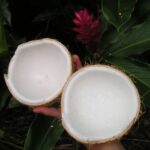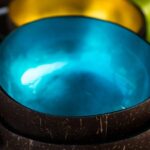Kava has become trendy in the US in recent times. You can find this ancient root in many online shops, headshops, and even enjoy a cup in a specialized kava bar. Kava has attracted many people thanks to its relaxing properties and the feelings of well-being that it brings along. Kava owes its relaxing effects to the kavalactones that it contains. But what are kavalactones and how do they work? We will answer these questions below.
What Is Kava?
Kava, also known as kava-kava or piper methysticum (its botanical name) has a history that goes back centuries – or even thousands of years – in the South Pacific islands. People from that area have been using the root of the plant traditionally in social gatherings, and in traditional ceremonies since ancient times. The plant is so popular in those areas, that it has become part of their culture, especially in countries like Fiji, Hawaii, Vanuatu, and Tonga, to name a few. In fact, in many regions, a traditional kava drink is offered to visitors when they arrive on the islands.
To prepare the traditional kava drink, the root of the plant is ground and mixed with water, and then strained and squeezed to obtain a kavalactone-rich liquid. The kava drink has sedative and analgesic effects, providing a feeling of happiness and relaxation.
What Are Kavalactones?
So, what are kavalactones then? Kavalactones are chemical compounds of the kava plant which are responsible for its properties and effects. Although the whole plant contains kavalactones, they are more abundant in the root, that’s why only kava root is used in kava drinks.
Researchers have been studying kavalactones since as early as the 19th century, and, so far, they have discovered 15 different types. However, it is believed that kava contains dozens, if not hundreds of kavalactones, including:
- kavain
- dihydrokavain
- yangonin
- methysticin
- dihydromethysticin
Kavalactones appear to facilitate the function of GABA receptors, in a manner that is similar to benzodiazepines, but they do not bind to benzodiazepine receptors. So, let’s see how kavalactones work below.
How Do Kavalactones Work?
Now that we have answered the question “what are kavalactones?” it is time to know how they work. When you drink kava, your system absorbs kavalactones through your digestive tract. Your system will react by:
- Increasing dopamine. Kavalactones such as desmethoxyyangonin are believed to trigger dopamine on your brain. That is the reason why you will feel calmer after drinking kava. Dopamine is also involved in the feeling of well-being that people experience with kava.
- Promoting GABA. GABA is an amino acid that acts as an inhibitory neurotransmitter. It counterbalances the level of excitement in your neurons caused by excitatory brain chemicals. The kavalactone kavain contributes to promoting GABA.
- Calming your nervous system. The kavalactone yangonin can work on your central nervous system to produce relaxing effects.
Studies have shown that isolated kavalactones are not as effective as the whole plant. So, kava extracts or powder must contain the same kavalactone proportion that is present in the plant.
Although several studies show promising effects on the use of kava for various ailments, we still need more research to fully understand how kavalactones work.
What Are the Uses of Kava?
As we said, kava was – and still is – used in traditional ceremonies and social gatherings in the South Pacific region. But the plant has been recently gaining popularity in the Western world too.
The kava root has analgesic, relaxing, and mood-lifting effects. Although most people use kava to relax and enjoy, there are more uses to consider, such as:
- ease anxiety and stress
- achieve better sleep
- relieve muscle tension
- mild pain relief
Besides, many people think that kava bars are a great alternative to traditional bars, pubs, and clubs. The environment in kava bars is typically very relaxing and they are ideal to chat and chill out.
How to Use Kava?
Many people go to kava bars to have their drinks, but many others prefer the comfort of their homes to enjoy kava.
The traditional way to prepare kava is not always the best choice, as it involves grinding, kneading, and squeezing of the root, which requires a certain technique. Besides, the kneading and squeezing process can be time-consuming. The best news is that you can find many products in the market that are easy to use at home.
Typically, you will find kava in powder form or powdered extracts. Kava powder should be mixed with warm water and strained before you drink it. It is advisable to let the mix sit for 10-20 minutes before you strain it, to make sure that the kavalactones have been released.
Alternatively, you can mix your kava drink using an aluball, a special type of bottle that might be very handy, especially if you are a regular kava drinker.
Finally, although kava is a safe herb, it should not be used by pregnant women or by people who suffer from a liver condition.



